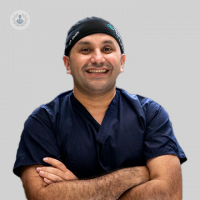Complex trauma: What you didn't know
Written in association with:Trauma is the most common cause of death for individuals aged below 45 years and is the third most common cause of death regardless of age after heart disease and cancer. There are three different kinds of trauma, one being complex trauma. Expert consultant orthopaedic surgeon Professor Mohamed Imam provides us with a descriptive understanding of what complex trauma is.

What is complex trauma
The word “trauma” may be used in two different contexts, a physical and non-physical context. Regarding the physical context, there is a physical injury from an external agent made upon a person. When it comes to the psychological context, the term trauma means a deeply distressing or disturbing event that has caused an emotional response. Trauma can have lasting adverse effects on the individual’s functioning physical, social, and emotional well-being.
We can divide trauma into three main types:
Acute Trauma
It mainly results from a single event, such as a road traffic accident.
Chronic trauma
It occurs when someone is exposed to multiple, long-term, and/or prolonged traumatic events over a continued period of time.
Complex trauma
Complex trauma involves multiple trauma that can cause multiple fractures and dislocations, brain injuries, breathing problems, organ failure, blood loss, infection, permanent disability, or loss of limbs.
What are some of the most severe complex trauma injuries?
Over 50 per cent of total hospitalised trauma patients have possible limb-threatening or life-threatening musculoskeletal injuries, which may result in significant functional impairment.
Complex injuries can be physical or non-physical. Physical injuries include fractures, organ injuries, including lungs, liver, and kidneys. The risk of fracture depends, in part, on your age.
Life- and limb-threatening injuries, including massive bleeding from a pelvic fracture or multiple long bone fractures, complete arterial injury in an extremity, and compartment syndrome, are addressed emergently. In these circumstances, orthopaedic management is included in resuscitation efforts and promoting the survival of life and limb.
Open fractures are included in complex trauma injuries, and they should be debrided within the first 24 hours. Mechanically unstable spine, pelvis, acetabulum, and proximal and diaphyseal femur fractures benefit from or definitive stabilisation within the first 36 hours after injury.
Spinal cord injury (SCI) is among the most devastating types of traumatic injury. The lifetime cost of caring for a patient with SCI can reach 5 million pounds, and the global incidence and prevalence of SCI have changed little in past decades. Variations in causation and ethnicity are found between and within regions and countries.
How do complex trauma injuries occur?
Complex trauma can happen after:
- natural disasters
- road traffic accidents
- domestic violence
- accidents
- sports injuries
How can complex traumas and preventable death be avoided?
We have been involved, as surgeons and scientists, in a lot of research to improve the outcomes of patients involved in complex trauma. Inappropriate management of complex trauma can create significant morbidity and mortality. Prevention is always the best strategy. However, this can only be achieved by the concerted efforts of the legislators, vehicle engineers, highway architects, proper trauma triage, and the development of trauma centres, as well as having efficient orthopaedic traumatologists.
Complex trauma can lead to death. A better understanding of the complex trauma is crucial to saving lives and limbs. Although, the rate of death underestimates the degree of the societal toll. Organised trauma systems have improved death by providing timely and expert care to severely injured patients. As well, patient management is comprised of rapid primary survey, focusing on the identification and treatment of immediate life-threatening injuries simultaneously.
Nowadays, we understand the “golden hour rule”; this is the window to treat potentially survivable life-threatening injuries. Approximately 60 per cent of preventable deaths occur in this time range.
If you have previously had a physical traumatic injury and would like a consultation, you can go to Professor Imam's Top Doctors profile and book a visit.


